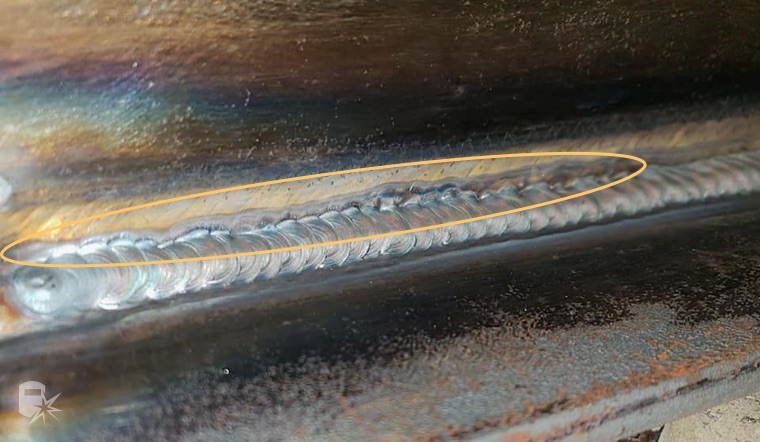Effective Ways to Prevent Weld Undercut in Your Welding Jobs
Effective Ways to Prevent Weld Undercut in Your Welding Jobs
Blog Article
Grasping the Art of Welding: How to Avoid Undercut Welding Issues for Flawless Manufacture Results
Effectiveness and accuracy are vital on the planet of welding, where also the smallest blemish can endanger the structural honesty of a fabricated item. One usual difficulty that welders face is damaging, a problem that can weaken a weld joint and lead to pricey rework. By comprehending the source of undercut welding and applying reliable techniques to avoid it, welders can elevate their craft to brand-new degrees of quality (Preventing weld undercut). In the pursuit of perfect manufacture outcomes, understanding the art of welding to stay clear of undercut concerns is not just an ability yet a necessity for those aiming for perfection in their work.
Comprehending Undercut Welding
To protect against undercut welding, welders must make certain appropriate welding criteria, such as readjusting the existing, voltage, travel rate, and preserving the right electrode angle. By comprehending the causes of undercut welding and carrying out preventive measures, welders can achieve high-grade, structurally sound welds.
Reasons of Undercut in Welding
Recognizing the aspects that add to undercut in welding is crucial for welders to create high-grade, structurally sound welds. Damaging takes place when the weld metal does not appropriately fill the groove developed in between the base steel and the formerly transferred weld metal. Several factors can result in damage in welding. One typical cause is excessive heat input. Welding at high temperature levels for extended periods can result in the base steel melting greater than wanted, causing damage. Inadequate welding inaccurate or current welding rate can additionally contribute to damage. Not enough current might not offer adequate warm to thaw the base and filler metals properly, while extreme rate can stop proper fusion, triggering undercut. Furthermore, improper electrode angles or incorrect torch adjustment methods can create locations of low weld metal deposition, promoting undercut. Recognizing these causes and implementing proper welding strategies can help stop damaging problems, making sure durable and strong welds.
Techniques to Prevent Undercutting

To mitigate the danger of undercutting in welding, welders can employ calculated welding methods focused on enhancing the top quality and integrity of the weld joints. One effective approach is to adjust the welding parameters, such as voltage, existing, and take a trip speed, to guarantee correct heat input and deposition. Keeping an ideal electrode angle and guaranteeing consistent travel speed can additionally help stop undercut. Additionally, this contact form utilizing the correct welding technique for the particular joint configuration, such as weave or stringer grains, can add to lowering undercutting. Preventing weld undercut.
Moreover, correct joint preparation, consisting of making certain tidy base products free of impurities and utilizing the web ideal welding consumables, is vital in preventing undercut problems. Employing back-step welding methods and controlling the weld bead account can likewise help disperse warmth uniformly and minimize the danger of undercut. Routine examination of the weld joint throughout and after welding, along with carrying out quality control actions, can aid in resolving and spotting undercutting problems immediately. By applying these methods carefully, welders can attain perfect fabrication results with marginal undercut flaws.
Importance of Proper Welding Criteria
Choosing and preserving ideal welding criteria is important for attaining effective welds with marginal flaws. Welding specifications describe variables such as voltage, existing, take a trip rate, electrode angle, and shielding gas circulation price that straight impact the welding procedure. These specifications have to be meticulously changed based on the kind of material being welded, its density, and the welding strategy employed.
Appropriate welding criteria guarantee the correct amount of warm is related to thaw the base metals and filler material consistently. If the specifications are established expensive, it can lead to extreme warmth input, creating distortion, spatter, or burn-through. On the other hand, if the parameters are also reduced, incomplete combination, absence of penetration, or damaging might take place.
High Quality Assurance in Welding Operations

Final Thought
In conclusion, mastering the art of welding needs a detailed understanding of undercut welding, its causes, and techniques to stop it. By ensuring appropriate welding specifications and implementing top quality guarantee techniques, perfect manufacture outcomes can be accomplished. It is vital for welders to constantly aim for quality in their welding operations to stay clear of undercut problems and create premium welds.
Undercut welding, a typical defect in welding processes, takes place when the weld metal does not correctly load the groove and leaves a groove or clinical depression along the welded joint.To stop undercut welding, welders ought to ensure appropriate welding criteria, such as changing the current, voltage, travel speed, and keeping the appropriate electrode angle. Poor welding existing or incorrect welding rate can likewise add to undercut.To alleviate the risk of damaging in welding, welders can utilize strategic welding methods aimed at improving the top quality and honesty of the weld joints.In final thought, mastering the art of welding needs an extensive understanding of undercut welding, its causes, and techniques to stop it.
Report this page